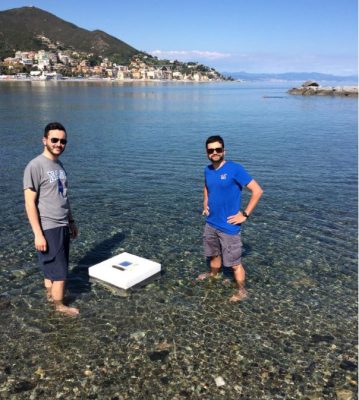Italian scientists are promoting a new desalination technology that uses solar energy alone. This low-cost technology could solve the drinking water shortage that many experts predict will be upon us soon. The FAO forecasts that by 2025, as many as 1.8 billion people may not have enough drinking water to satisfy their daily requirements. The FAO (Food and Agriculture Organization) is a specialized agency of the United Nations that leads the global effort to defeat hunger.
Solar energy involves capturing the Sun’s energy and using it in a way that benefits us. In most cases, it involves converting the Sun’s energy into electricity. We can also us the term solar power.
Desalination is the removal of sodium chloride (salt) and other minerals from seawater so that we can drink it. Desalination also makes water suitable for agricultural and industrial use.
Low-cost and sustainable desalination
A team of Italian engineers devised a new desalination prototype that turns seawater into drinking water in a sustainable way. The process, which is also low cost, uses solar energy more efficiently.
This technology can produce twice as much water as previous solutions at given solar energy. The researchers said that soon they will probably be able to bring costs down even further.
The engineers wrote about their work in the prestigious journal Nature Sustainability (citation below). The authors are Francesca Viglino, Eliodoro Chiavazzo, Matteo Morciano, Pietro Asinari, and Matteo Fasano. They are all from the Politecnico di Torino’s Department of Energy.

Simple desalination technology
The working principle of their desalination technology is very simple, the authors wrote.
Matteo Morciano and Matteo Fasano explained:
“Inspired by plants, which transport water from roots to leaves by capillarity and transpiration, our floating device is able to collect seawater using a low-cost porous material, thus avoiding the use of expensive and cumbersome pumps.”
“The collected seawater is then heated up by solar energy, which sustains the separation of salt from the evaporating water. This process can be facilitated by membranes inserted between contaminated and drinking water to avoid their mixing, similarly to some plants able to survive in marine environments (for example the mangroves).”
‘Passive’ technology
Traditional ‘active’ desalination technology requires expensive electrical or mechanical components. Pumps, for example, are mechanical components. They required specialized technicians for maintenance and installation.
Engineers based this latest desalination approach on spontaneous processes occurring without the need for ancillary machinery. We can, therefore, refer to it as ‘passive’ technology. Hence, the device is inherently low-cost and easy to install or repair.
These latter features are particularly attractive in coastal regions where chronic shortages of drinking water are common. Especially coastal regions where centralized infrastructures and investments are not yet present.
Disadvantage of ‘passive’ technologies
The main disadvantage of ‘passive’ versus ‘active’ technologies has been their relatively low energy efficiency. The researchers in this latest study said that they faced this obstacle with creativity.
The authors wrote:
“While previous studies focused on how to maximize the solar energy absorption, we have shifted the attention to a more efficient management of the absorbed solar thermal energy.”
“In this way, we have been able to reach record values of productivity up to 20 liters per day of drinking water per square meter exposed to the Sun. The reason behind the performance increase is the ‘recycling’ of solar heat in several cascade evaporation processes, in line with the philosophy of ‘doing more, with less.'”
“Technologies based on this process are typically called ‘multi-effect,’ and here we provide the first evidence that this strategy can be very effective for ‘passive’ desalination technologies as well.”
Engineers tested the desalination prototype
The engineers spent over two years developing the prototype. They subsequently tested it in the Ligurian Sea. The Ligurian Sea is between the Italian Riviera and the island of Corsica.
The prototype may have an impact in isolated coastal regions with too little drinking water but lots of solar energy. Coastal regions in developing countries especially could benefit from this technology, the authors believe.
The technology is also suitable for providing safe and cheap drinking water in emergency conditions. An isolated area hit by a tsunami or severe flooding, for example, could benefit enormously.
Floating gardens
This desalination technology could supply fresh water to floating gardens for food production, especially in overpopulated areas, the authors added.
The research team is currently looking for industrial partners to make the prototype more scalable, versatile, and durable.
Citation
“Passive solar high-yield seawater desalination by modular and low-cost distillation,” Eliodoro Chiavazzo, Matteo Morciano, Francesca Viglino, Matteo Fasano, and Pietro Asinari. Nature Sustainability, Volume 1, Pages 763–772 (2018). DOI: https://doi.org/10.1038/s41893-018-0186-x.
